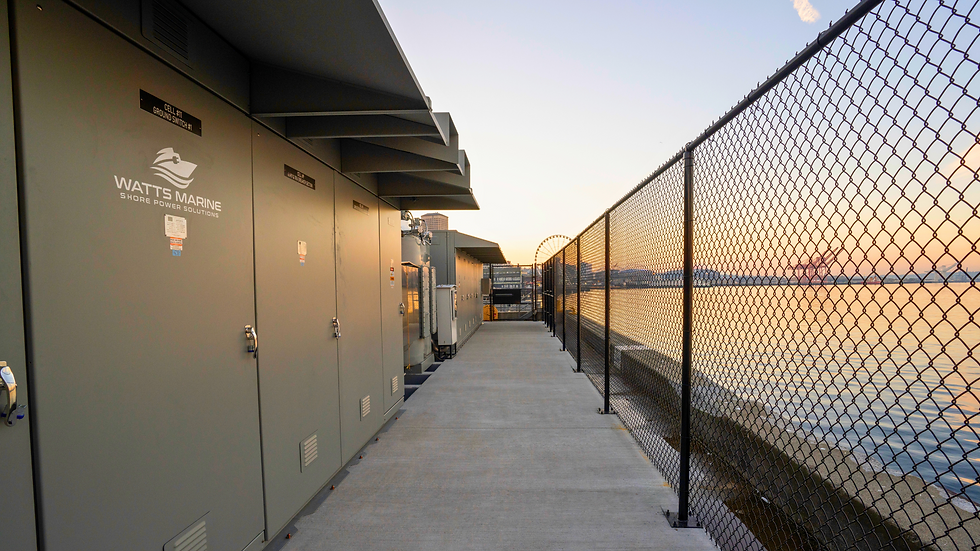Cruise Industry Adopts Shore-Side Electricity to Reduce Emissions at Ports
- Watts Marine

- Feb 6, 2024
- 2 min read
Updated: Apr 23

One significant strategy being adopted by cruise lines and ports to reduce emissions is shore-side electricity (SSE), also called “cold ironing” or shore power systems. According to some estimates, the industry can lower CO2 and other pollution emissions up to 98% by shutting down all on-board power generation from diesel engines and connecting to shore power supplied by the local utility.
The Cruise Line Industry Association (CLIA) indicates that 40% of its global members’ ships are set up to operate in SSE in 29 ports, which is up 20% year over year. And of new builds ordered between now and 2028, 98% are either planning to be fitted with SSE systems or be configured to add it in the future.
One of the technical challenges, however, is determining exactly how much emissions are being reduced by SSE. Today innovators in the design of standalone shore-to-ship power solutions like Kingston, WA based Watts Marine are addressing that issue with improved reporting systems based on information gathered from the underlying power protection system components.
Watts Marine has installed its Shore Power System at ports in Seattle, WA; San Diego, CA; San Francisco, CA; Halifax, NS; Vancouver BC; Brooklyn, NY; and Long Beach, CA.
The company’s patented custom shore power system consists of proprietary equipment including dual-voltage electrical service equipment, custom-developed electrical cable handling equipment, and customized electronic monitoring and control equipment.
Protection relays and redundant safety systems are used to protect both the ship and shore electrical systems. For this, Watts Marine partnered with an industry leader, Pennsylvania-based NovaTech Automation, a substation automation company that has served the power transmission and distribution market for more than 40 years.
“As in the case of traditional substations, protection relays and redundant safety systems ensure reliable and safe power transmission while monitoring and control equipment provide real-time management and remote access with in-depth reporting,” explains Conrad Oakey, CEO of NovaTech Automation.
To document the reduction in fuel emissions, Watts Marine utilizes information collected by NovaTech’s Orion automation system to calculate the total emissions reduction across all main pollutants while a ship is connected to shore power and tracks other important information in its database. Daily connection reports are generated with key metrics for each shore power connection, including KWH of energy consumed and connection start and stop times.
For more information on SCADA solutions from NovaTech Automation, visit www.novatechautomation.com or call (913) 451-1880.
SOURCE:
Author: Power PR Inc.
Please note: The news content featured on the Watts Marine website is sourced from external news outlets and media organizations. Watts Marine does not claim authorship of this material. Full credit is given to the original publishers, with direct links or references provided to the original articles and sources.




Comments